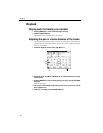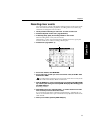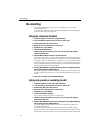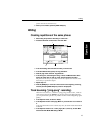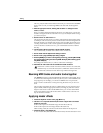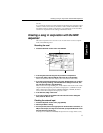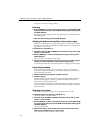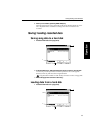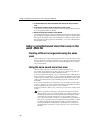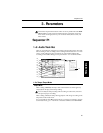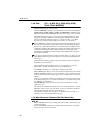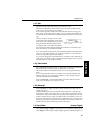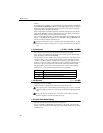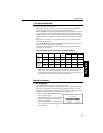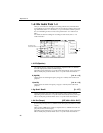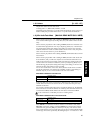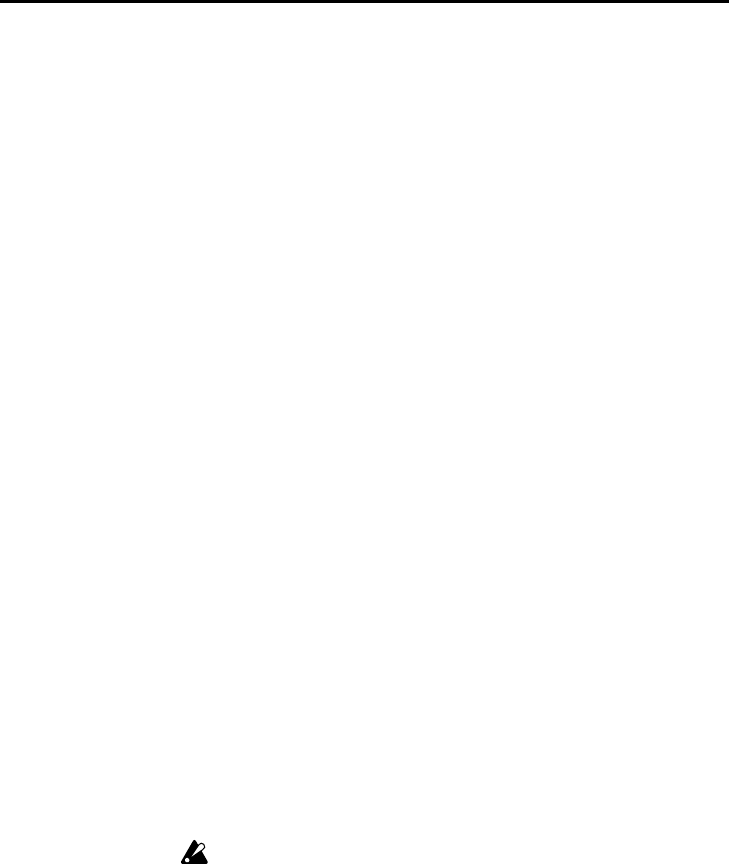
Using a recorded sound more than once in the same .SNG file
20
2 In the Drive Select box, select the hard disk that contains the data you wish to
load.
3 In the directory window, specify the data that you wish to load.
As necessary, use the Open or Up buttons to move through the directory hierar-
chy, and specify the data to be loaded.
4 Execute the page menu command “Load Selected.”
The dialog box that appears when Load Selected is executed will depend on the
type of data that is being loaded. Follow the instructions given in the dialog box
that appears. For details on the various dialog boxes and the procedure, refer to
the explanations for the page menu commands in “1–1: Load” of Disk mode in
the Parameter Guide.
Using a recorded sound more than once in the
same .SNG file
Creating different arrangements using the same
vocal
After selecting a new song in Song mode, select the “Copy from Song” function
from the page menu of Sequencer mode P1 to copy the song containing the data
you wish to use to a new song. Then re-record the MIDI tracks, etc. to create a
new accompaniment.
Using the same sound more than once
Here is a useful way to use a recorded sound effect more than once.
For example, suppose that you are using song 19 as a “library song” that con-
tains various sound effects recorded at different locations.
To use a sound from this “library song,” use the P5 tab 3 page (ATrkEdit) page
menu command “Copy Measure” to copy sounds to the desired location in the
song that you are creating. If you need to make fine adjustments to the location
of the sound, use the P5 tab 3 page (ATrkEdit) page menu command “Audio
Event Edit.”
If you use the “Copy Measure” command to copy all sounds recorded in other
songs to a “library song,” these sounds will be ready for immediate use if they
are ever needed later; you will not have to re-record them.
Collecting sounds in a “library song” in this way also provides a backup of the
sounds.
In the “Copy Measure” dialog box, specify the Start Measure and End
Measure of the copy source, and execute the copy command. At the copy
destination, the number of measures specified in the dialog box will be
overwritten. For example if measures 1–4 were specified as the copy
source, the four measures 1–4 will be overwritten at the copy destination.
However if “Copy Measure” is executed between songs that have a differ-
ent Tempo setting, the playback time will differ even if the number of
measures is identical, meaning that the copied data may not fit into the
specified number of measures, or that a gap may occur at the end of the
measures.



